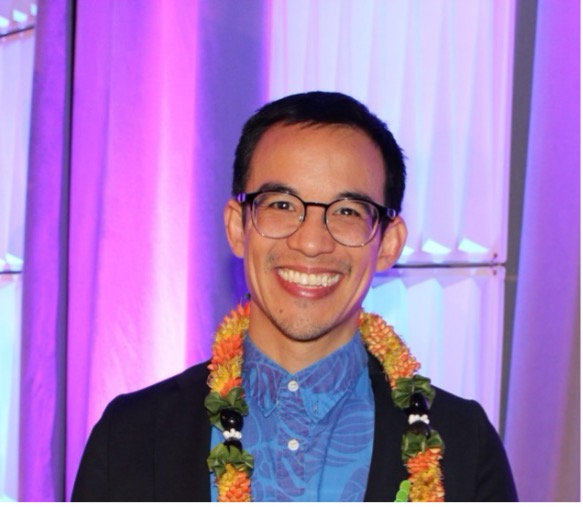Curator’s note: This week’s AEA365 posts contain Hawaiian language words that use certain diacritical markings. We make our best efforts to include these markings to be as culturally and grammatically accurate as possible, however, these markings often display as question marks or boxes, and may display differently on different browsers and devices. For best readability we have omitted some of those marks here.

Aloha, my name is Thaddeus Pham (he/him). I live in Hawai’i, was born in California, and trace my family back to Vietnam. I am a queer cisgender man, a son of refugees, and, by culture and inclination, a teller of stories.
Lessons Learned:
“This is great data, but…”
Storytelling is especially important in my role as the Hawai’i Department of Health’s (HDOH) Co-Chair for the Hawai’i Sexual and Gender Minority (SGM) Workgroup. In 2017, a small group of HDOH employees released the state’s first ever Hawai’i Sexual and Gender Minority Health Report. Despite our excitement, we quickly learned that we did not do enough to clarify damaging misconceptions and limitations of the data. In particular, our local SGM community pointed out the perceived exclusion of transgender people. Although this was due to insufficient numbers to report from the Youth Risk Behavior Survey (YRBS) and Behavioral Risk Factor Survey System (BRFSS), we did not explain this well enough in the report. Our data analyses were solid, but our storytelling skills were lacking.
“Let us tell our own stories”
The story we had put forth into the community was harmful, if unintended: transgender people’s health was not important. Not only that, SGM community leaders from Ka ‘Aha Mahu and Kua ‘Ana Project pointed out that the survey data was grounded in colonial dichotomies and ignored the lived experiences of local people. To address the harms of this narrative, we intentionally set out to create a follow-up report that told a more meaningful, inclusive, and useful story for our communities. Through extensive stakeholder engagement, the 2018 Hawai’i SGM Health Report focused on transgender youth and highlighted stories of resilience to contextualize survey data. This second report was used by the community to not only uplift local stories but also change the policy narrative in Hawai’i through legislative action (e.g., adding third gender marker on state licences).
“I know what this means”
When I presented this second report to community leaders, many expressed not only gratitude, but also recognition. What we learned from this experience may be useful for others working with communities that have been historically marginalized: data can contribute to pernicious, damaging narratives. In evaluation practices, let’s make the intentional choice to do the harder work of promoting stories that affirm identities rather than erase them.
Rad Resources:
- Hawai’i Sexual and Gender Minority Resource Hub
- Hawai’i Sexual and Gender Minority Health Report (2017)
- Hawai’i Sexual and Gender Minority Health Report: A Focus on Transgender Youth (2018)
Hot Tip:
We include in each of our posts this week categories of well-being from Kukulu Kumuhana: Creating radical and new knowledge to improve Native Hawaiian Well-being. Today we offer Ke Akuna Mana which means spirituality.
The American Evaluation Association is hosting CREA-HI Week. The contributions all this week to aea365 come from members of the Hawai’i affiliate of Cultural Responsive Evaluation and Assessment (CREA). Do you have questions, concerns, kudos, or content to extend this aea365 contribution? Please add them in the comments section for this post on the aea365 webpage so that we may enrich our community of practice. Would you like to submit an aea365 Tip? Please send a note of interest to aea365@eval.org. aea365 is sponsored by the American Evaluation Association and provides a Tip-a-Day by and for evaluators. These views and opinions do not necessarily represent those of the American Evaluation Association, and/or any/all contributors to this site.
